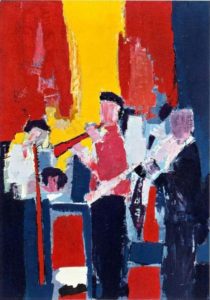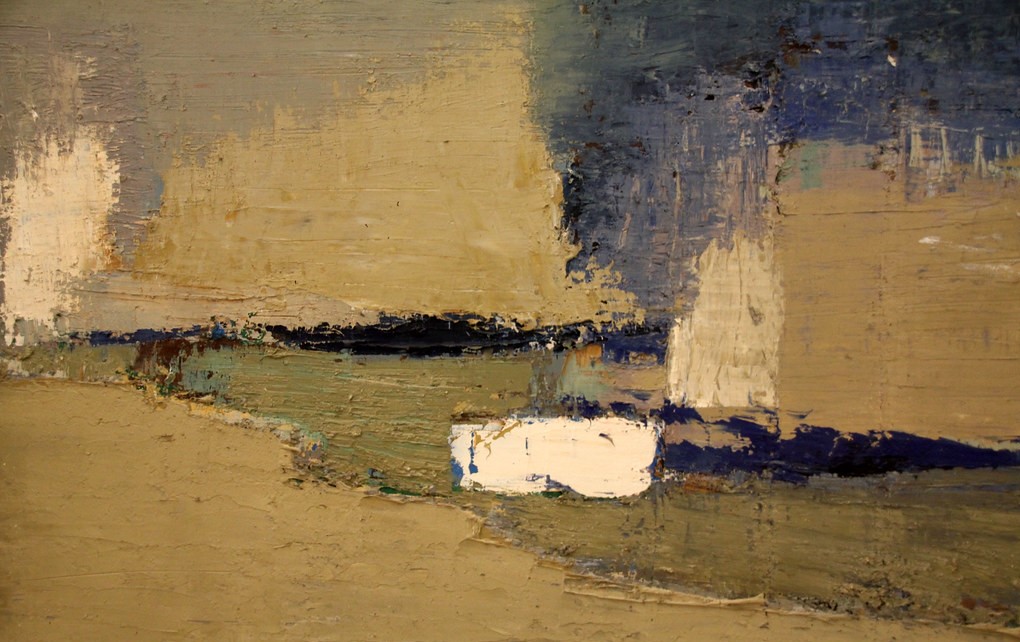Nicolas was born in 1914 in the military aristocracy of St. Petersburg. To escape the revolution, the family emigrated to Poland until the death of his father, after which the young Nicolas was sent to live with a Russian family in Brussels.
Ten years later, he studied at the Royal Academy of Fine Arts in Brussels and travelled around the world. In Europe and North Africa, he went to school and met his first girlfriend Jeannine Guillou. Nicolas de Staël served in the French Foreign Legion between 1939 and 1941, then returned to Nice before going to Paris. With his wife Jeannine they lived in great poverty. Her works were exhibited in various exhibitions in 1944 and 1945, but the success came too late for Jeannine, who died of a disease related to malnutrition in 1946.
De Staël then met and married Françoise Chapouton, and from 1947 onwards Nicolas de Stael’s works began to attract attention in Paris, then in New York and London.
In 1953, New York dealer Paul Rosenberg signed an exclusive contract with de Staël.
the artist will be commercially successful and these prices will increase as well as the orders for paintings. This will cause de Stael problems of insomnia and depression.
In the autumn of 1954, the artist acquired an international reputation and decided to settle with his family of four children in Antibes, where he set out in search of rest and reflection.
a certain
On March 16, 1955, Nicolas de Stael killed himself by jumping from the terrace of his eleventh-floor studio, the cause, a meeting with a derogatory art critic.
His paintings and influences

The Musicians 1952.
According to Jean-Baptiste Gouraud, De Staël’s work was influenced by artists such as Cézanne, Matisse, Picasso, Braque, Léger and Soutine…etc. As was the case with many young modern artists.
The musicians’ painting is a late work in the style of Nicolas de Staël. It has been reduced to blocks and integrated on a background of four vertical bands. The edges are slightly offset from the vertical. This characteristic is associated with shredded edges and colour variations produced by the palette knife. This is to create a movement that is here a vibrant rhythm called “staccato”.
Such characteristics alone would not produce satisfactory work, but the coloured tiles are extremely pleasant in themselves, showing subtle modulation, variety and an intrinsic sense of balance.
Les premières pièces étaient des œuvres sensibles et intéressantes, mais ne connaissaient pas un grand succès. A partir de 1940, de Staël s’oriente vers l’abstraction en produisant plus d’un millier d’œuvres au cours de ses quinze années de carrière, une fois de plus ces œuvres antérieures qui dans les galeries d’art nationales sont généralement incluses en raison de leur nom plutôt qu’en raison de leurs qualités intrinsèques. Ce n’est qu’à la fin des années 40 que de Staël se lance dans la production de ses célèbres œuvres, premières compositions abstraites ou semi-abstraites d’empâtements en sourdine les couleurs, puis les pièces lyriques fluides et lumineuses qui sont devenues instantanément des références.
